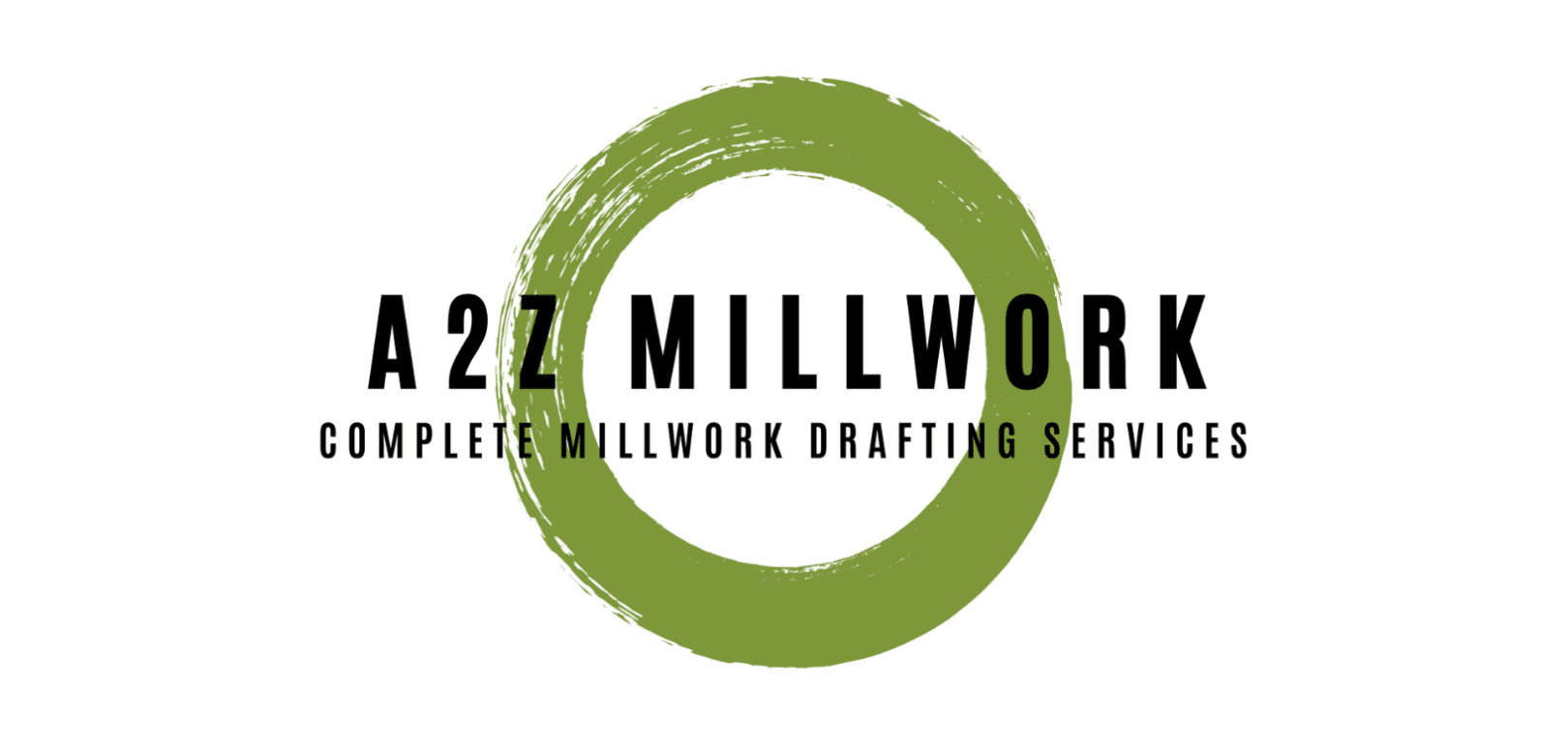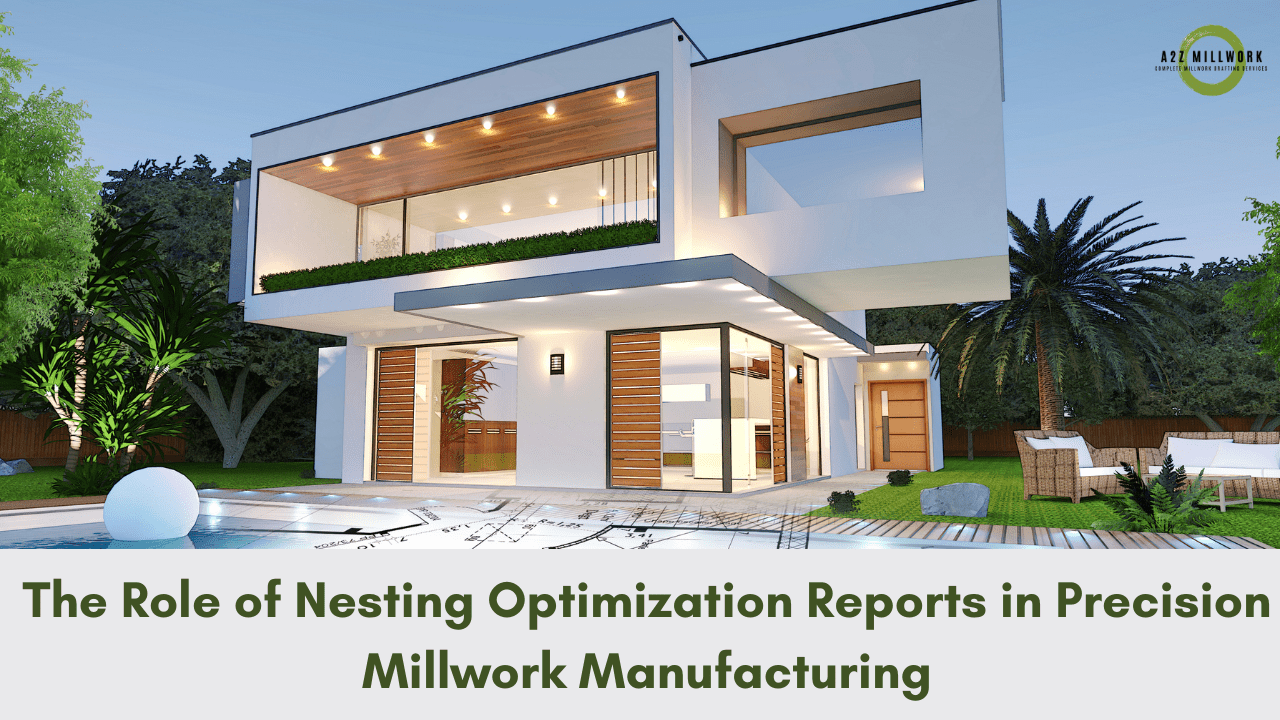Introduction
In today’s competitive millwork industry, precision and efficiency are paramount. Manufacturers are constantly seeking innovative ways to minimize waste, maximize yield, and improve production workflows. One of the most effective tools in achieving these goals is nesting optimization reports. These reports play a crucial role in precision millwork manufacturing by providing detailed insights on material usage, cutting sequences, and cost savings.
As millwork manufacturers in the U.S. strive to meet increasing client demands and strict industry standards, nesting optimization has become an essential component in ensuring high-quality outputs with minimal material waste. This article explores the importance of nesting optimization reports, how they enhance precision manufacturing, and their impact on cost efficiency. We will also discuss how A2Z Millwork Design LLC is leading the way in implementing these advanced methodologies to help businesses streamline their millwork production.
Understanding Nesting Optimization in Millwork Manufacturing
What is Nesting Optimization?
Nesting optimization is the process of arranging parts to be cut from sheet materials such as wood, plywood, MDF, or particleboard in the most efficient manner. The goal is to maximize material usage while reducing waste. Advanced CAD/CAM software like Microvellum or Cabinet Vision generate these nesting patterns, which guide CNC machines in executing precise cuts.
What Are Nesting Optimization Reports?
Nesting optimization reports are data-driven documents that outline how materials should be cut and utilized in production. These reports include:
- Cutting patterns: A visualization of how materials are nested.
- Material utilization percentages: Data on waste reduction and efficiency.
- Toolpath optimizations: Ensuring CNC machines operate with minimal tool changes.
- Cost analysis: Breakdown of material savings and labor efficiency.
By using these reports, millwork manufacturers can eliminate human errors, reduce material costs, and enhance production accuracy.
Benefits of Nesting Optimization Report in Precision Millwork Manufacturing
1. Significant Cost Savings
Material costs account for a substantial portion of a millwork project’s expenses. By utilizing nesting optimization reports, manufacturers can reduce material waste by up to 30%. Since the software efficiently places parts within a sheet, fewer raw materials are required, leading to direct cost savings for manufacturers and their clients.
2. Maximizing Material Utilization
Traditional cutting methods often lead to excessive scrap material. Nesting reports provide precise layouts that maximize every square inch of material, making millwork projects more sustainable and cost-effective.
3. Improved CNC Machine Efficiency
With optimized nesting, CNC machines can operate with fewer tool changes and faster cutting paths. This reduces machine downtime and accelerates production cycles, allowing manufacturers to complete projects in less time without sacrificing quality.
4. Enhanced Accuracy and Precision
Nesting reports minimize the risk of human error in cutting operations. By relying on CAD-generated patterns, manufacturers can achieve perfectly aligned cuts, consistent part dimensions, and flawless assembly in their millwork projects.
5. Reduction in Labor Costs
Since nesting optimization streamlines cutting processes, laborers spend less time measuring, marking, and manually adjusting cuts. This results in lower labor costs and increased overall efficiency in the workshop.
6. Sustainability and Environmental Benefits
By reducing material waste, millwork manufacturers contribute to environmentally responsible production practices. Less waste means fewer discarded materials in landfills, helping companies align with green manufacturing initiatives and regulatory requirements.
Implementing Nesting Optimization in Millwork Production
Step 1: Choosing the Right Nesting Software
Millwork manufacturers use advanced nesting software like:
- Cabinet Vision – Ideal for detailed cabinetry and millwork projects.
- Microvellum – Provides seamless integration with AutoCAD-based drafting.
- Alphacam – Specialized for woodworking and CNC machining.
- EnRoute – Suitable for panel processing and complex routing.
These programs generate nesting optimization report that improve production speed, minimize errors, and maximize yield.
Step 2: Integrating with CNC Machines
To fully leverage nesting optimization, manufacturers must ensure seamless integration between software and CNC machines. This integration:
- Automates cutting operations.
- Reduces human intervention.
- Enhances production accuracy.
Step 3: Training Millworkers and Designers
Proper training in reading and interpreting nesting reports ensures that workers fully understand cutting sequences, material layouts, and cost analysis. Training programs should cover:
- Nesting report interpretation.
- CNC machine operations.
- Material handling best practices.
Step 4: Continuous Improvement and Data Analysis
Manufacturers should regularly analyze nesting reports to identify areas for improvement in material utilization and workflow efficiency. By tracking production data over time, companies can refine their processes for even greater cost savings and accuracy.
The Future of Nesting Optimization in Millwork Manufacturing
As technology advances, nesting optimization is expected to become even more precise and intelligent. Here are some emerging trends shaping the future of millwork drafting:
- AI-Powered Nesting Software:
- Machine learning algorithms will further refine cutting patterns, making them more efficient over time.
- Cloud-Based Nesting Reports:
- Remote access to nesting data will allow manufacturers to optimize workflows across multiple production facilities.
- BIM Integration:
- Nesting optimization will integrate seamlessly with Building Information Modeling (BIM) for improved project planning.
- Automated Material Handling Systems:
- Robotics and automation will streamline material loading and unloading, further enhancing production speed and accuracy.
Conclusion: How A2Z Millwork Design LLC Leads the Way
A2Z Millwork Design LLC is at the forefront of precision millwork manufacturing in the United States. By leveraging state-of-the-art nesting optimization report, A2Z Millwork helps businesses reduce costs, enhance material efficiency, and improve production workflows.
Why Choose A2Z Millwork Design LLC?
- Expertise in Cabinet Vision and Microvellum shop drawings.
- Integration of advanced CNC machining techniques.
- Commitment to sustainability and cost-effective manufacturing.
- Highly detailed nesting optimization reports for maximum efficiency.
By partnering with A2Z Millwork Design LLC, businesses in the millwork and cabinetry industry can eliminate unnecessary waste, speed up production, and achieve unparalleled precision in their manufacturing processes.
For more information on how A2Z Millwork Design LLC can transform your millwork production with advanced nesting optimization.
Final Thoughts
Nesting optimization reports are revolutionizing the millwork industry, offering unparalleled cost savings, efficiency, and accuracy. By implementing these reports, millwork manufacturers can stay competitive in the U.S. market while enhancing their sustainability efforts. With leading firms like A2Z Millwork Design LLC, businesses can confidently move toward a future of precision-driven and cost-effective millwork manufacturing.



